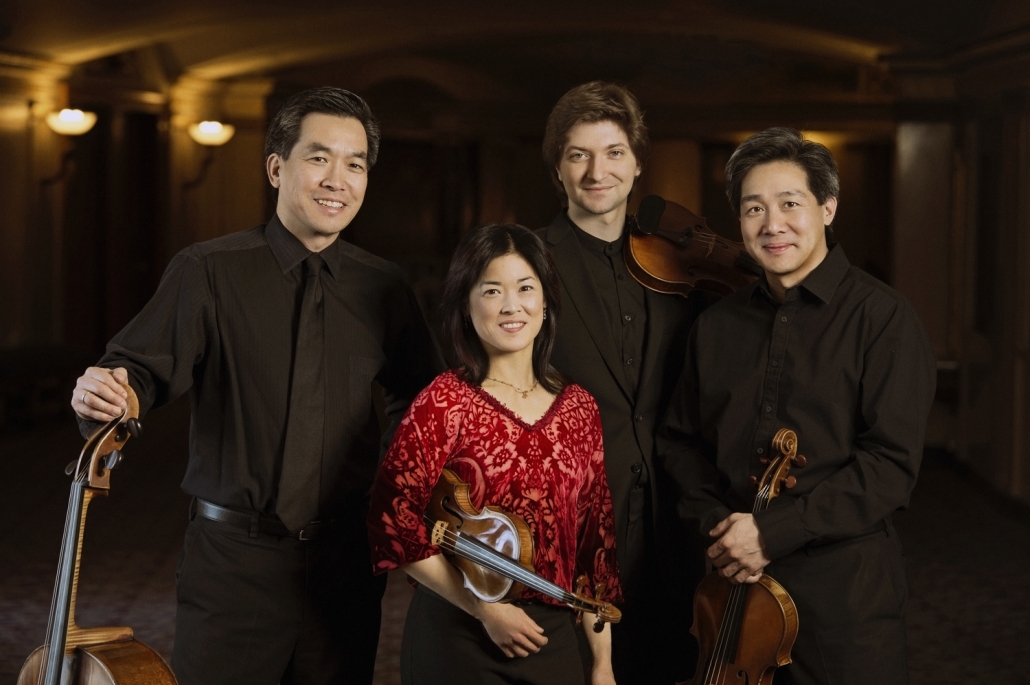Throughout his life, Dmitri Shostakovich contributed several great works to the chamber music genre including 15 string quartets. Even among these greatly celebrated works, the Eight Quartet stands out as a true masterpiece of formal innovation, musical drama, and autobiographical melodicism. The work bears the dedication, “To the victims of fascism and war.” This dedication and the sheer amount of self-quoting Shostakovich does with several melodies in the work leads some to say that he was thinking not only of the tragedy of WWII and the Holocaust but also of his own oppression under the Stalin regime. The primary motive of the work is in fact a musical depiction of four letters of the composer’s name – DSCH – which in German musical notation represents the pitches D-Eb-C-C#. The work opens with this motive staggered in all four voices before quoting both his first and fifth symphonies. The second movement explodes into a fast dance with a Jewish musical theme that was also highly featured in his 2nd Piano Trio in e minor. This dramatic music transforms into a lighthearted danse macabre in the third movement, which again makes use of Jewish musical style this time in the form of a waltz. After a couple interruptions using a theme from his first cello concerto, this music fades down into one voice before once again being interrupted by the beginning of the fourth movement. The three harshly articulated notes found in this movement are thought to represent not only gunfire but also the hard knock at the door of the secret police as well as a secret signal from revolutionaries that they were nearby. A revolutionary song and a quote from Shostakovich’s own Lady Macbeth opera are heard before dissolving into the fifth and final movement. This closing music makes intricate use of the DSCH motive heard earlier before presenting a final version of this music at a huge dynamic, only to fade away much as the piece began, offering little comfort or resolution. The version heard this evening was prepared by DSQ’s soprano saxophonist, Dan Graser.
Igor Stravinsky’s music can be divided into three periods with somewhat arbitrary dates: the opulent and ferociously primitive years (1908-1919) that produced The Rite of Spring; his so-called “Neoclassical” period (1920-1954) which brought L’histoire du soldat, Pulcinella, the Octet and the 1924 Piano Sonata; and the third period of Serialism (1954-1968) which saw such works as The Rake’s Progress. As usual, categorization fails to tell the whole story and, in fact, here introduces certain inaccuracies. Stravinsky himself scorned the Neoclassical label smacked on him with the composition of Pulcinella.
In the shifting styles throughout Stravinsky’s compositional life nothing was lost, for the greatness of his music transcends stylistic changes. Stravinsky said of himself that he “only continues” and that he “never returns.” On this subject, Milan Kundera, in his brilliant collection of essays, Testaments Betrayed, is clear about this when he speaks of Stravinsky’s “vagabondage through musical history” as never compromising his “incomparable originality.”
The single work entitled Three Pieces for String Quartet was written in 1914, the year after The Rite of Spring. Stravinsky himself commented that the pieces marked “an important change” in his music. By this he meant his turning from the lavish style of The Rite of Spring to the more austere style that would mark his second period.
Signaling this change are the simple metronome markings he gave to the movements. Later he would add titles that aptly describe the individual pieces. The first he called “Danse,” the second “Eccentrique,” and the third “Cantique.” Thus we have the first piece with its folk-dance rhythms, the jocular second piece that Stravinsky said was “inspired by the great clown, Little Tick,” and the third piece that he describes as “choral and religious in character.”


